解析游戏设计元素之美术方向
作者:Whachoo Talkin Bout Willis?
我知道游戏什么呢?
好吧,我想我知道设计游戏的基本原理,或者至少我现在应该知道了。游戏设计开始于凭空想象出来的一个想法,这个想法之后会变成一份概要。这份概基本上包含设计师要做的一切工作,并且要求非常明确——设计师基本上无法任意发挥创意,而要严格地遵守概要上的要求。我想这对某些人来说会产生很大限制,但是我发现不让我自由发挥时我反而能表现得更好。也许是巧合,也正是在最近几年崛起了许多独立游戏工作室,独立游戏设计师们有更大的自由做自己想做的游戏,而不是按别人的要求做游戏。但在适当的时候,我们也会那么做。(请点击此处阅读游戏设计元素之角色和环境)
根据概要,我们可以开始做概念美术了。概念设计师是游戏业中最具探索性的工作,因为他比其他人有更多自由,并且处于设计过程的最前沿,对游戏整体结果有相当大的影响。许多概念设计师习惯先画出角色剪影,这是一种视觉头脑风暴技术。
上图和下图反映了概念设计师从绘制剪影到完成设计的过程。
根据这些概念图,我们可以开始使用3DS Max、Maya和Z-Brush等软件制作角色的模型和材质;在完成的模型上添加贴图和动画(如果有需要),然后放进游戏引擎中做测试。再接着,程序员开始写引擎的脚本,同时声音效果和音乐也添加进来(如果有需要)。这是一个简化版的过程。
早期的电脑游戏是由人数非常少的团队完成的。事实上,像《Pong》和《吃豆人》这样的游戏因为美术、剧情、场景或角色工作量很小,只一个人就完成了。
在一次采访中,Gearbox工作室(游戏邦注:代表作包括《Brothers in Arms》、《边境之地》、《半条命》和《毁灭公爵》)的Randy Pitchford谈道,工作室最初只是一个5人小团队,为了制作电影级游戏,意味着故事要更丰富、角色要更逼真、特效要更华丽(更别说该死的音乐),所以:
“现在,我们有72个全职雇员,还有跟我们合作的外包员工。当然,外包数量会有波动,看我们当时做什么,一个两个到几十个。我们还有由5个经理和1个部门主管领导的QA团队。这些人都是长期员工,但当我们为产品做最终QA时,可能会增加到30多人。”
游戏设计的方方面面现在都划分给擅长特定领域的团队,各个团队都要遵守一条沟通路线,也就是,从设计师到项目经理再到美术总监。概念设计师把资料交给3D建模师,后者再与动画师合作,然后动画师再与程序员合作……你有另一个团队专门负责音乐,有时候甚至要为游戏写整个乐谱(《光晕》、《上古卷轴》、《最终幻想》)。在很大程度上,制作这种游戏简直接近于制作大电影!
与其他艺术一样,以时装设计和音乐为例,电子游戏设计也开始违背自己的初衷了。许多公司正在发行的大量游戏向好莱坞大片靠拢,又因为消费者的选择多了,所以大多数开发商损失惨重,甚至导致工作室破产。再加上强大如iPhone等移动设备的普及,非常能理解为什么有那么多设计师选择3、4个人组成独立游戏工作室,像《Pong》的时代那样,设计制作全部自己完成。
以非常成功的游戏《超级食肉男孩》的开发团队为例。这个独立工作室由两名设计师Edmund McMillen和Tommy Refenes组成。这两位开发者把他们在2008年制作的一款Flash游戏做改进,一年后诞生了《超级食肉男孩》。2012年2月,该游戏在Steam和X-box Arcade等平台的过百万下载量使他们获利颇丰,从此名扬游戏界。这个项目载入2012年的文件“独立游戏:电影”中,让人们见识到了真正的游戏开发者的工作和生活起伏。
人们普遍认为,手机最终会成为游戏领域的主宰,游戏机时代正在终结……不过我真心不希望这样!
游戏的美术方向
正如上文所说的,在电脑游戏行业的发展早期,任何类型的游戏所需的美术工作量都非常小,但Dianna Davies在她的文章中告诉我们:“现在,游戏是一种讲究竞争力的严肃商业。”有许多因素能吸引我们(玩家)成为某款游戏的受众,对于我本人,能让我看对眼并决定支付30-50英镑的游戏,首先视觉效果就要养眼。
人们总说,不要靠封面来判断一本书。但游戏不是文学作品。在游戏领域,游戏的成功与否与视觉画面越来越有关系。
至少可以这么说,美术总监是个责任重大的职位。在她的文章中,Dianna Davies解释道:
“美术总监是创意的梦想家,负责确定项目的视觉方向。用什么颜色体现游戏环境的氛围?贴图要达到多少精细度?城市中的建筑应该是什么风格?这个关卡的地形要怎么安排?游戏世界的环境特征是什么?血液应该多红?美术总监与游戏设计师密切合作,一起塑造游戏世界。美术总监肩负着向美工团队传达他的美术设计想象力的重任。”
美术总监不仅直接负责游戏的外观,还要协调设计团队,确保他们以及与其他团队保持高效合作。他们与美术主管密切合作,使想象成为现实。根据我所读到的,一个优秀的美术总监必须是一个杰出的艺术家和出色的经理人。他们必须擅长交流,保证他们的观点不仅能传达给其他人,并且能让其他人理解。时间就是金钱,浪费时间或使用不当,可能严重影响整个开发过程。他要对所有团队平易近人,但同时遇到偷懒的人或薄弱环节时又能拿出强硬的态度,也就体现了能够严格要求他人的工作是必要性。我想这就是为什么在开发过程中要经常提到:宁可在设计过程中找到错误,也不要等到发布时被客户和记者发现漏洞。
工作环境好,工作效率才会高。美术总监的工作还包括高效地管理团队。其他行业往往关上门办公,从而在员工之间制造屏障,然而在强调团队合作的游戏业中,开放的工作空间往往能产生更高的工作效率。但是,太多人在一起工作,有时候会使工作区内产生不相干的谈话,所以,3-4个设计师组成的团队在一起工作的效率更高。这些是美术总监要解决的问题。
Phillip Bossant是《美国陆军》的执行制作人兼美术总监。在采访中,他说道:“幸运的是,《美国陆军》的外观和感觉已经做好了,基本上不难引导美工和设计师朝正确的方向进前了。这些天我花这么多时间画这个项目的东西,这是很少见的情况。”这番话多少让我们窥探到美术总监这个角色的日常工作:主要包括奔走于设计师之间、跟进他们的工作、用建设性意见引导他们走向最终目标。还要大量阅读、发送和追踪邮件,很少有休息时间。为了继续工作,Bossant承认他甚至要在办公桌上吃午饭!如果走运,他就能腾出个把小时和妻子见个面,然后又开始新一天的忙碌工作……这就是我们为艺术付出的代价!
Harry J. Evry在他的书《Beginning Game Graphics》总结得好:
“在专业游戏美术部门,美术总监就好像一艘船的船长。美术总监通常负责确定游戏的视觉基调、品质、风格。他们至少间接负责游戏中的每一个对象、贴图、关卡、角色和特效。这就是身负重任。
优秀的美术总监必须考虑在游戏的各个关卡中如何表现各个角色、道具、场景和地点。甚至像花草树木、残垣断壁和街头涂鸦都必须认真设计,以体现游戏的故事、氛围和想象等。有时候,一个小小的道具对于故事的重要性就不亚于玩家遇到的许多角色。”
我不确定我个人能否承担这么大的责任,所以我对那些能担此重任的人满怀敬意,特别是如果他们还做得非常好的话!
以下我附上Capcom对美术总监的要求:
10-15年的工作经验
能够管理多个团队/游戏。协调不同项目的优先级。
积极提高当前技能和学习新技能
定期改革自己的游戏和其他游戏采用的技术和开发流程
乐于奉献于自己的工作和责任范围,适应性强,有责任心。
促进学科内和跨项目、跨团队、跨学科的高效合作;与游戏和工作室执行团队保持密切合作
领导多个游戏领域和确定项止可交付成果
必须能够指导主管和团队
作为游戏领域团队中的一员
起带头表率作用
(本文为游戏邦/gamerboom.com编译,拒绝任何不保留版权的转载,如需转载请联系:游戏邦)
Elements of Game Design Part 1: From Pong to Next Gen…
by Whachoo Talkin Bout Willis?
What do I know about game design? Hmmm…
Well I guess I know the basic fundamentals to designing a game, or at least I should by now. It all starts with an idea I guess, something dreamt up from the depths of some bright sparks imagination, and from that idea a brief is developed. A brief basically outlines the job the designers are employed to do, and is very specific; the designers rarely have the option to use their
artistic licence and everything must be done to the exact requirement set out. I imagine this can feel very restrictive to some people but I find that I work best when not left to my own devices.
It is perhaps of little coincidence that in the last few years the industry has witnessed a boom in independent games studios, where the idea men and designers have far more leeway to build the game they want to, rather than how they are told to, but we’ll get to that in due time.
From a brief we would begin working on the concept art. The role of concept artist is one of the most sought after jobs in the industry, this is because you have more freedom than anyone else, you are at the very beginning of of the design process, and have a hugely significant impact on the overall outcome of the game. Many concept artists begin by sketching silhouettes, a sort of visual brain storm technique.
The above and below pictures are a good example of how artists build from their initial silhouette shapes to develop their final designs.
From these concepts we would begin to build the assets using programs like 3DS Max, Maya and Z-Brush; The finished models would then be textured and animated (if necessary) and put into a game engine and tested. It is then put to the programmers to write program scripts for the engine and sound effects & music are added (if required). That’s the short version I guess.
Early computer games were made with a very small team of people, infact games like Pong and Pac-man that required very little in the way of art direction, storylines, environments or characters were designed by one person.
In an interview with Gamasutra.com, Randy Pitchford of Gearbox Studios (Brothers in Arms, Borderlands, Half-Life & Duke Nukem) explains how “on day zero our first team consisted of 5 people” but now, with the demands of games to be more like movies, with engrossing stories, fascinating characters and gripping special effects (not to mention killer soundtracks) he told them:
“Right now we have 72 full time employees at Gearbox, and there are a number of contractors we work with. That number, of course, fluctuates, depending on what we’re doing, from one or two, to several dozen. We also have a Quality Assurance team that is led by 5 managers, and a department head. Those guys are permanent staff, but when we’re doing final assurance for a product, it can grow to be as large as 30 or more people.”
Every aspect of game design is now divided amongst teams who specify in specific areas, and each team has a communication line to follow, ie. Designer to Project manager to Art Director . The concept artist feed information to the 3d modellers, who then work with animators, who then work with programmers etc. You have separate teams that working on the music alone, sometimes games even have whole scores written specifically for them (Halo, Elder Scrolls, Final Fantasy). It really is like making a blockbuster movie in many cases!
But much like other arts, Fashion and Music for instance, the world of video game design is starting to go back on itself. With so many companies releasing ‘blockbuster’ games with massive layouts before they’re even released, and so much choice for the customers, most of the developers are making huge losses, and more often than not, studios are going under. Add to this the boom in powerful handheld devices like the Apple Iphone, it is very understandable why so many designers have taken it upon themselves to create small independent games studios, often consisting of 4 or less people, who, like in the days of Pong, design and make everything themselves.
Take the case of Team Meat, developers of the highly successful ‘Super Meat Boy’. This independent studio consists of two designers, Edmund McMillen and Tommy Refenes. The game was a successor to a flash game created by the pair in 2008, and took just over a year to make. But with just over one million copies sold over various downloadable platforms like Steam and X-box Arcade as of January 2012, it has made the pair a pretty penny and launched their name into the games industry. The entire project is covered in the 2012 documentary ‘Indie Game: The Movie’, and is a real eye opener into the lives of real game developers and the highs and lows that come with the role.
It is widely thought that the way the world is going, it wont be long until all games will be designed for handheld devices and the age of the console will be no more… I really hope not though!
As discussed in my last post, in the early days of the computer games industry, there was very little need for art direction of any kind; but as Dianna Davies tells us in her article for
Gamasutra.com, “Nowadays it is serious business with a competitive edge.” There are many elements that attract us (the gamers) to a specific game, and for myself, it has to look good for me to even consider picking it up and spending £30-£50 on it.
They say you should never judge a book by its cover, but this isn’t literature, this is the games industry, the height of visual stimulation, and looking good is becoming more and more vital to the its success.
Okami HD
Ico
The role of a project Art Director is a demanding one to say the least; in her article, Dianna Davies explains:
“The art director is the creative visionary, responsible for defining the visual direction of the project. What colors will define the mood of the environment? What level of detail should the
textures convey? What are the buildings in a city supposed to look like? How does the terrain look on this level? What kind of ambient characters populate this world? How red should the blood be?
The art director works closely with the game designer to shape the game world. The art director carries the burden of communicating his or her vision of the game design to a diverse team of
artists.”
Elderscrolls V: Skyrim
Gears of War 3
Not only is the AD directly responsible for the look and feel of the game, they are also responsible for assembling the design team and making sure they work productively together, among other things. They work very closely with the lead artist to get their vision realized. From what I have read, a good AD needs to be a great artist and an even greater manager. They must be competent communicators as it is essential their point is not only heard, but understood; time is often of the essence and time wasted or used insufficiently can have a huge impact on the entire process.
They should be approachable to all the team, and able to be firm in weeding out the slackers or weak links, this is where the ability to be critical of others work is imperative and I guess is why
it is so often referred to in our course; it is better to spot faults during the design process than to have the clients and journalists spot it once it has been released.
A good working environment is essential to productivity, and it is often the AD’s job to arrange the team in an efficient way. Closed doors create barriers between colleagues and in an industry so dependent on team work, it is often found that an open workspace is most effective, however too many people placed together can sometimes make room for irrelevant conversing and so it can be more effective to have small groups of 3-4 designers together in each space… these are the issues that an AD must overcome.
Phillip Bossant
Phillip Bossant, Exective Producer and Art Director at America ‘s Army Game Project Public Applications Team took Gamasutra.com through a typical day in the life of an AD. He begins by stating that “Fortunately, the look and feel of America’s Army has already been well established and it’s typically not hard to steer the artists and designers in the right direction” and that “it’s rare that I get to spend much time painting on the project these days.” However, it’s still an interesting insight to what the role demands day-to-day. It mainly consists of going around and speaking with the designers, getting updates on their work and guiding them towards the final goal with constructive feedback. There is a lot of reading, sending and following up on emails too, and rarely time to relax; he even admits to having lunch at his desk so he can keep working! If he’s lucky he’ll get an hour or so to relax with his wife before it all starts again the next day… the prices we pay for art!
Mirrors Edge
I think the online book ‘Beginning Game Graphics’ by Harry J. Evry sums up the role perfectly:
“In professional game art departments, the art director is the captain of the ship. Art directors are generally responsible for setting the visual tone, quality, and style for the game. They are at
least indirectly responsible for every object, texture, level, character, and effect that appears in a game. This is a profound responsibility.
A good art director must consider how each character, prop, set, and location will look from any possible place in any level of the game. Even things like plants, trees, paving stones, cracks in the walls, and graffiti must be carefully designed to support the story, feel, and illusion of the game. Sometimes, the individual props and furnishings can be as crucial to the story as many of the characters the player encounters.”
I’m not sure I could cope with that amount of responsibility personally, so I have a lot of respect for the men and women that can, especially if they are successful in what they do!
I’ll leave you with the requirements of any prospective AD wishing to join Capcom:
10 – 15 years of experience
Ability to own multiple workgroups/game. Handle multiple priorities at thislevel and set priorities for others.
Takes active interest in enhancing current skills and learning new ones.
Regularly innovates craft and process adopted by own game and other games.
Demonstrates dedication, adaptability & accountability in own work and areas of responsibility.
Drives collaboration effectively with others in same discipline, across feature groups and cross-discipline on a regular basis; works closely with game & studio exec teams
Lead multiple game areas/1 game and define deliverables.
Must be able to mentor leads and groups.
Member of game leads group, and defines features.
Act as a role model.
Sounds intense!(source:whachootalkinboutwillis part1,part 2)
上一篇:分享用Construct 2制作连线消除游戏的教程(1)
下一篇:阐述游戏设计的5大现实谬论之敌人



























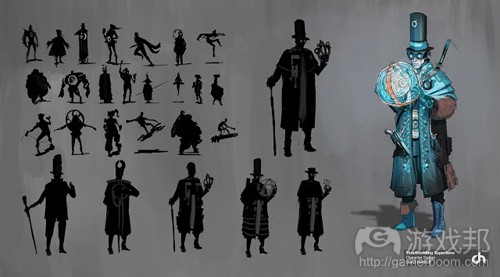
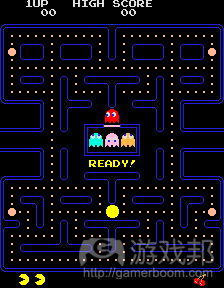
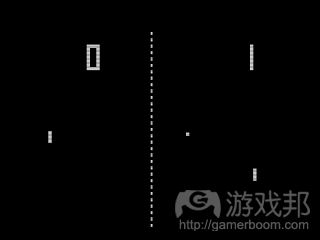
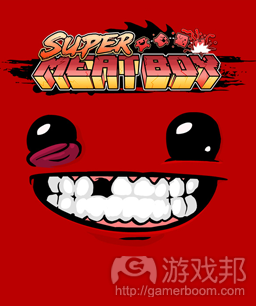


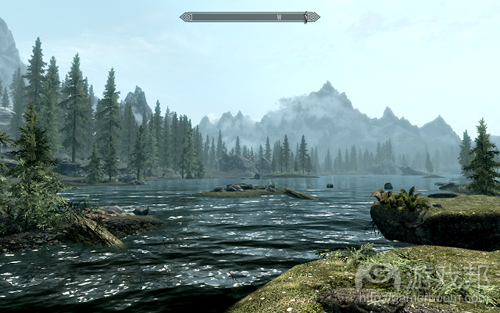
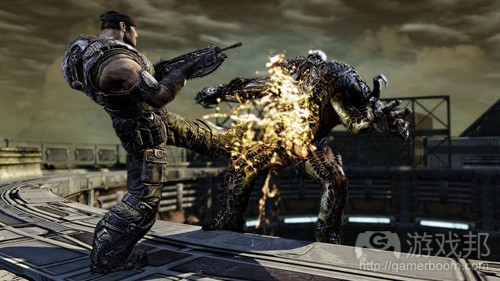
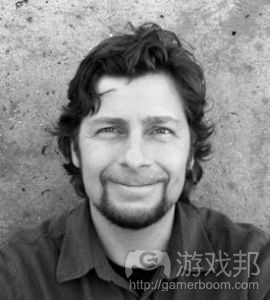
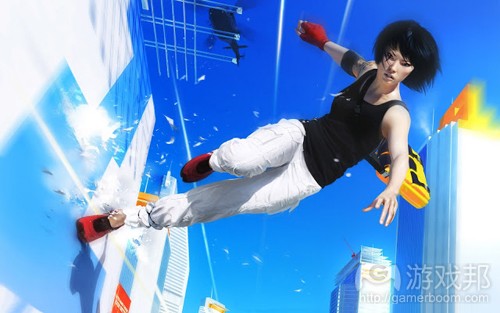














 闽公网安备35020302001549号
闽公网安备35020302001549号